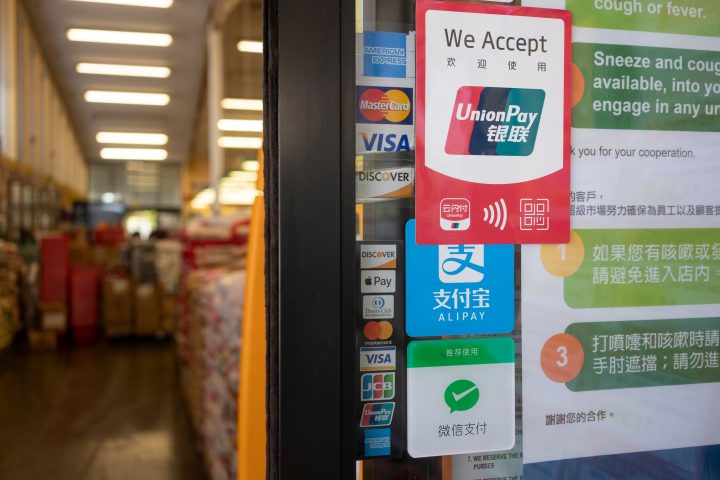Navigating the digital landscape of payments in China is an exciting journey given the plethora of options available to consumers and businesses alike. Here’s a quick rundown of the top 5 Chinese payment apps that are reshaping how transactions are conducted in the world’s most populous country:
Alipay: Alipay is the kingpin of mobile payment apps in China, boasting a user base that includes a staggering 93% of digital payment customers. Much like its Western counterparts such as Apple Pay, Alipay functions as an eWallet, storing your debit or credit card information and enabling you to breeze through checkout lines and online payments with just your smartphone. Alipay isn’t just for buying; you can also send and receive money with ease. For international visitors, the Alipay Tour Pass is an especially handy feature, making it simpler to navigate payments while traveling in China.

WeChat Pay: Running a close second in popularity, WeChat Pay captures 86% of the mobile payment market, integrating seamlessly with the ubiquitous social media platform WeChat. This app doubles as a digital wallet connected directly to your bank account, allowing you to make payments, transfer money to peers, and settle bills both online and in-store wherever WeChat Pay is accepted. Its integration into a platform already used daily by millions for messaging and social networking significantly boosts its convenience and user base.
UnionPay: Unlike the more consumer-focused apps, UnionPay is the brainchild of commercial banks, designed to link and streamline services across the UnionPay network. This app not only facilitates easy management of bank accounts but also supports mobile payment services. With UnionPay, users can add their bank card and then make payments via QR codes or NFC technology, both online and in physical stores.
JD Pay: Initially created for use on JD.com, one of China’s largest online retailers, JD Pay has expanded its services beyond the e-commerce platform to include various third-party retailers and even some brick-and-mortar stores. Users need to register with JD Pay and link their UnionPay, Visa, or Mastercard credit or debit cards to start enjoying smooth cashless transactions.
Tenpay: Developed by the tech giant Tencent, which also brought WeChat to life, Tenpay is another formidable player in the digital wallet space. It focuses on making contactless payments and sending money with ease. For online shoppers, Tenpay’s Express Checkout feature offers a quick and efficient payment solution, streamlining the buying process to just a few seconds.
Fintech in China
In October 2019, a significant shift occurred in the perception and potential use of blockchain technology in China. The Central Committee of the Communist Party of China organized a comprehensive study session dedicated to this cutting-edge technology. This signaled a renewed enthusiasm for blockchain technology across various sectors of China’s economy. This move was particularly noteworthy given the shadow cast over the sector by the 2017 ban on initial coin offerings (ICOs), which had significantly curtailed the vibrancy of China’s burgeoning blockchain scene. President Xi’s open support was seen not just as a regulatory softening, but as a clarion call for renewed vigor in exploring blockchain’s potential applications, from enhancing data security to revolutionizing supply chain logistics and beyond.
This renewed focus bore tangible fruits when, on February 5, 2020, the People’s Bank of China (PBOC) released a new set of industry standards concerning the security of financial distributed ledger technologies, known as the Financial Distributed Ledger Technology Security Specification. These guidelines marked a pivotal step in standardizing blockchain applications within the financial sector, addressing critical areas such as operational security, risk management, and the integrity of financial services. The establishment of these standards is crucial for fostering a secure environment for the adoption of blockchain technologies, paving the way for more robust and trustworthy internet-based transactions.
Further solidifying this trajectory, the Fintech Development Plan (2022–2025) issued by the PBOC laid out a strategic blueprint for the integration of blockchain technology within China’s financial landscape. The plan outlines ambitious goals to harness distributed ledger, smart contracts, and consensus mechanisms to tackle prevalent issues in data security and transaction integrity. Specifically, the focus on enhancing applications in supply chain finance and trade finance indicates a clear intent to leverage blockchain to streamline these complex systems, thereby boosting efficiency and reducing fraud risks. This initiative not only underscores China’s commitment to modernizing its financial services through technology but also positions the country at the forefront of global fintech innovation. With these concerted efforts, China is setting the stage for a fintech future that promises greater security, efficiency, and economic synergy, showcasing a positive outlook for blockchain technology’s role in reshaping financial services globally.




